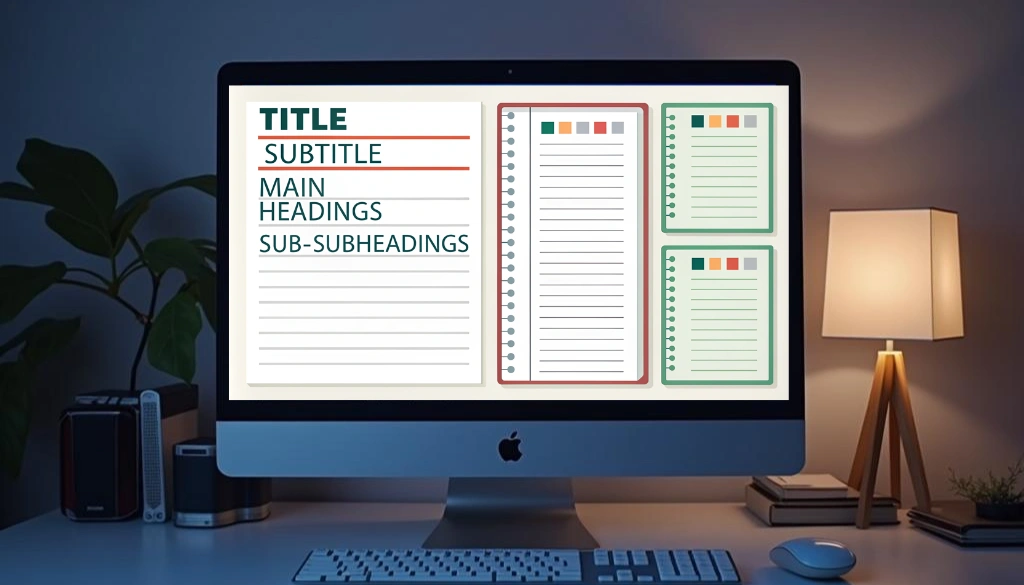Last Updated: January 23, 2025
Using Word’s styles for headings in academic papers boosts clarity and organization. A well-structured document helps readers steer your ideas with ease. By applying different heading levels, you create a visual hierarchy that guides your audience through the content.
For example, use Level 1 for main titles and Level 2 for subheadings. This method allows readers to swiftly pinpoint key points and supporting details. Mastering these styles not only enhances your writing but also lends your papers a polished, professional look!
Table Of Contents
Understanding Word Styles for Headings in Academic Papers
Understanding Word styles for headings is necessary for creating organized academic papers. Using different heading levels boosts readability and establishes a clear visual hierarchy. In Word, easily apply styles by finding your way to Home > Styles or pressing Alt+H then L. Choose options like Heading 1 for main titles and Heading 2 for subheadings.
These styles structure your content, making it more navigable. A well-organized outline might include:
- Heading 1: Main Title
- Heading 2: Section Title
- Heading 3: Subsection Title
Modifying a heading style updates all instances throughout your document, ensuring consistent styling. This consistency is critical for meeting accessibility standards and enhancing document design. By crafting descriptive and concise headings, you support both visual and non-visual readers.
Mastering Word’s heading styles is a critical step in manuscript preparation and effective academic writing.
Applying Different Heading Levels for Document Structure
Using Word styles effectively enhances the structure of academic papers. By applying different heading levels, we create a clear text hierarchy that guides readers through our work. For instance, Heading 1 acts as the main title, Heading 2 denotes section headings, and Heading 3 identifies subsections. This method improves readability and organizes our ideas logically.
To apply these styles, select the text and choose a style from the Styles gallery. This simple process ensures consistent styling throughout your document. Plus, using multilevel numbering allows headings to update automatically as you add new sections, streamlining outline formatting.
We can also use the Document Map feature for quick navigation, which is necessary for lengthy manuscripts. By adhering to formatting guidelines, we not only meet academic standards but also improve the visual hierarchy and professionalism of our work.
Summing up
Using Word’s styles for headings greatly improves the organization of academic papers. This method boosts clarity and readability, enabling readers to steer sections easily with the Document Map. By applying different heading levels, we create a clear structure that effectively guides our audience through our ideas. A well-organized paper not only looks professional but also conveys our thoughts more effectively. Let’s keep refining these skills to improve our writing!
Frequently Asked Questions
How do you format headings using styles in Word?
To format headings in Word, select your text, then choose a style like “Heading 1” from the Styles gallery for consistent formatting.
Can I customize heading styles in Word for my academic writing?
Yes, you can customize heading styles in Word by modifying them in the Styles gallery to fit your academic writing needs.
What are the benefits of using styles for headings in Word?
Using styles for headings in Word enhances organization, improves navigation, and ensures consistent formatting throughout your document.
How do I create different heading levels in Word for my academic paper?
To create different heading levels in Word, select your text, then apply styles like “Heading 1,” “Heading 2,” etc., from the Styles gallery.





